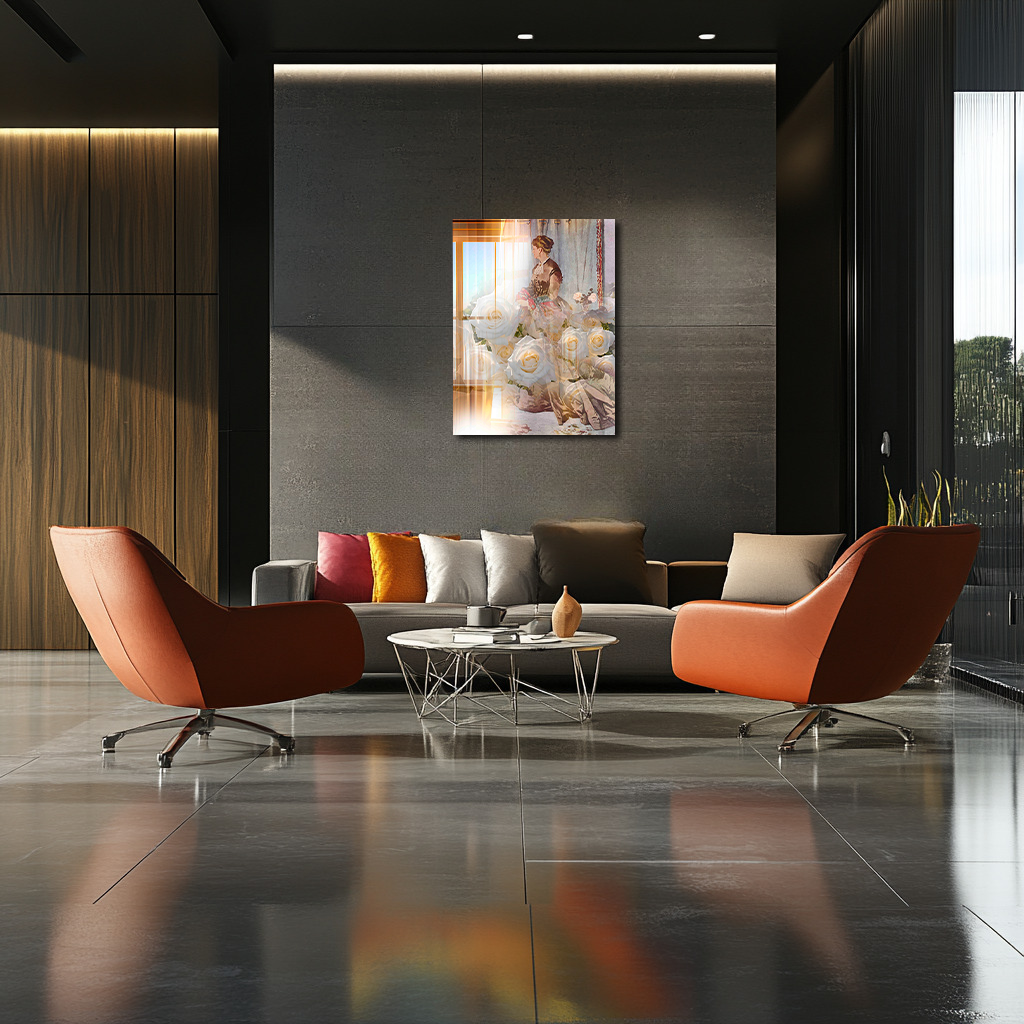Madame in Bloom: The Light Beyond the Curtain
Madame in Bloom: The Light Beyond the Curtain reimagines Monet’s 1868 portrait of Madame Gaudibert as a luminous dream of memory and presence. Surrounded by ethereal white roses and bathed in golden light, she gazes beyond the curtain, her figure gently dissolving into bloom and radiance. This surreal reinterpretation invites the viewer to witness not only the elegance of a portrait, but the quiet flowering of the soul beneath it.
Please see Below for Details…
Hotline Order:
Mon - Fri: 07AM - 06PM
404-872-4663
Claude Monet’s Madame Gaudibert , painted in 1868, is a portrait steeped in quiet dignity. The composition, refined and restrained, depicts Madame Gaudibert standing beside a window, wrapped in soft light and the poise of upper-class elegance. Her gaze is turned outward, as though seeking something beyond the visible frame. In this surreal reinterpretation, titled Madame in Bloom: The Light Beyond the Curtain , the portrait is transformed into a luminous dream where roses rise like memory and sunlight pours like thought. The original stillness is expanded, flooded with light and layered with emotion, where time stands still not in silence, but in bloom.
Madame Gaudibert remains poised at the edge of the window, her figure dressed in earth-toned satin and lace, a composition of grace and patience. Yet now, her presence is no longer solely defined by posture—it is enveloped by ethereal white roses, their petals soft and endless, blooming from within the fabric of her gown and rising gently around her. The flowers do not decorate—they embody. They pulse with the quiet rhythm of reverie, each one a whisper from the interior world she inhabits.
The window behind her no longer frames a world of muted tones. It has become a threshold, pouring in radiant bands of gold and morning sky blue. The curtains are not closed—they are parted, like theater drapes drawn back to reveal the soul of a woman not only painted, but remembered. Light floods through the room in golden streaks, dissolving edges and softening lines, suggesting a presence that is both human and eternal.
The roses, symbols of grace and complexity, rise through the composition with gentle insistence. Their pale yellow centers glow faintly, echoing the warmth of the light cascading through the window. They emerge from table and floor, from curtain folds and dress hems, as if time has surrendered to memory’s garden. Madame Gaudibert herself becomes part of this bloom—her form gently dissolving into the floral current, her silhouette wrapped not only in fabric, but in presence.
Color functions as atmosphere. Sepia and rose tones intertwine with soft whites, glowing ivories, and warm creams. There is no harshness, no separation between subject and world. Everything merges, gently and deliberately. The structured poise of the original portrait dissolves into softness, not to weaken it, but to elevate it into a poetic dimension. Light becomes the ultimate medium—painting not only her form, but the emotion surrounding it.
As the artist, I approached this reinterpretation with the desire to honor Madame Gaudibert’s silence while giving voice to what lingers beneath it. She is not merely standing—she is blooming, remembering, glowing in the soft flood of morning. The roses represent more than beauty—they are echoes of memory, of thought held just beyond words. The window is no longer just a source of light—it is an invitation to what lies beyond, to what she sees that we cannot.
This surreal portrait is a meditation on presence and transformation. It imagines Madame Gaudibert not as a figure fixed in time, but as a soul flowering quietly into eternity. Her posture remains, but her spirit drifts among the petals and sunlight, never still, always unfolding.
Add your review
Your email address will not be published. Required fields are marked *
Please login to write review!
Looks like there are no reviews yet.








